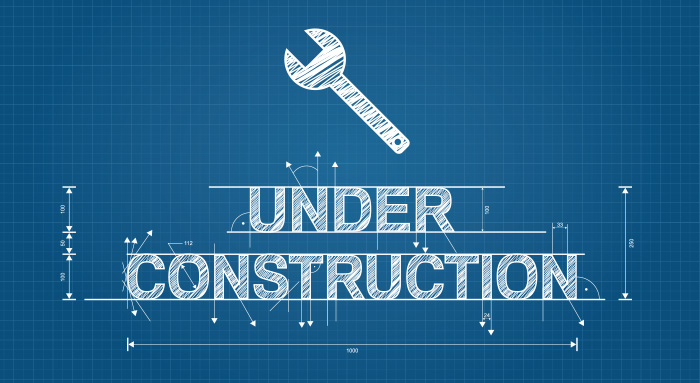How to Unpublish WordPress Site

WordPress is one of the world’s leading website management platforms, using WordPress you can easily create a website as well as remove it from the internet in less than a minute. However, you can only do it so quickly if you actually know what you are doing. This is why we have created this article, where we are going to be explaining how to unpublish WordPress site using a number of different methods.
Difference Between Deleting a Website and Unpublishing
When you delete a website you are essentially removing it forever unless you have backed it up. On the other hand, if you unpublish a WordPress site you are essentially making it temporarily invisible until you reinstate it. This can be done for a number of reasons, one of the main ones of which is if you are improving your WordPress website. The process of improving your website is a notoriously tricky and laborious one, during that will certainly involve a lot of errors that you will likely not want your visitors to see.
After you have finished unpublishing your website, you will have the option of displaying what is known as a ‘construction page’ in place. A construction page, also known as a holding page is a notice displayed to the visitor instead of your online platform that notifies that you are currently conducting updates or under maintenance mode as well as reassurance that you will be back soon. This is much better than simply having a blank page that will certainly give off the impression that your site has closed down.
Unpublishing Your WordPress Site Manually
- The first thing that you should is to back up your website in case something goes wrong, which no matter your level of experience can still happen. A great wordpress plugin for this is All-in-One migration, however, it is not free. If you do not want to pay then good free plugins include BackUpWordPress and WP Clone. Of course, if you plan on starting completely over you could save time and skip the step of backing up your site’s content.
- Next, you have to expand the left sidebar, if it is not already expanded. From there you have to look for the ‘Settings’ section, once you have found it you should click on ‘General’.
- After you have clicked on the ‘General’ link you will be taken to a brand new page. At the very bottom of this page, you will see three options called ‘Change your site address’, ‘Delete your content’ and ‘Delete your site permanently’. Each one of these categories gives you the opportunity to unpublish your website in a number of ways. By changing the site’s address you can make your online platform visible to only those that know the new link which will most likely be a random sequence of letters and numbers in front of the default WordPress domain. While the other alternatives are pretty self-explanatory, you are able to remove all of the content such as posts and media while you can also delete the entire site which will include the settings and theme.
- When you have selected one of the options, you will be given a prompt warning that this choice is not reversible unless you have externally backed up the site’s files. From there on you click delete again and have to enter the domain of the website in order to confirm your decision for a final time which is used to limit accidental deletions.
- It is important to note that deleting posts and pages will have a negative effect on your SEO or search engine optimization thus reducing the amount of organic traffic that your website will receive from leading search engines such as Google and Bing.
Unpublishing Your WordPress Site Using Plugins
- If you are looking for another solution then we suggest for you to take a look at plugins. A plugin is a third-party piece of code that anyone can easily install and activate on their website. There are literally thousands of plugins for every single thing that an owner of the site will need help with.
- To install a free plugin all you have to do is take a look to the left of the WordPress admin dashboard, what you are looking for is the ‘Plugins’ section.
- Once you have found it, you should click on the ‘Add New’ link, from there you will be redirected to a new page. On this page, you have to look at the very top where you will see a search window on the right side.
- In this search window, you simply have to type in the name of a popular plugin that will help to display a construction page. Suitable options worth considering include the Under Construction Page and WP Maintenance Mode. From there on you just have to click on the install button of the plugin that you want to install and just follow the prompts presented to you. Alternatively, you can download the file of a plugin in upload using the ‘Upload Plugin’ button that is found at the very top.
- This is a particularly good option for the new WordPress users, although it is also ideal for users of all experience levels that simply want to save time and do not want to change the domain or backup then delete content only to re-add it at a later date.
Alternatives to Unpublishing Your WordPress Website
Hopefully, you managed to learn about the two main options when it comes to unpublishing a WordPress website, below we will discuss a number of other alternatives that may be better in certain cases.
Unpublishing Specific Users
If there is a number of different users on your WordPress hosted site then you can simply opt to unpublish a user. This can be done by filtering only the post and pages from the users in question and mass unpublishing them. Alternatively, you can delete a user, which gives you the prompt to also delete all of the content that they are responsible for.
Unpublishing Pages and Posts
Rather than having to renovate your entire site, you can just focus on removing the posts and pages that are causing the problems. For example in some cases, due to code errors on a particular post or page, there may be a number of errors popping up. A solution to this could be simply to delete the instigating part of the website, you can simply copy and paste the content into a new page if you want to keep the actual content.
Password Protecting
Another super quick method to limit access to a part of your website is to password protect it. This can be easily be done for pages and posts by simply using the right-hand sidebar menu, where you can select the password to protect option and type in a password. For password-protecting other parts of the website, there are plugins such as Password Protected and Access Category Password.
Unpublishing Using the WordPress Theme
If you are lucky, the WordPress theme that you are using will give you the option to unpublish your website usually by presenting a holding page just by clicking an integrated option as part of the theme.

 Subscribe
Subscribe

